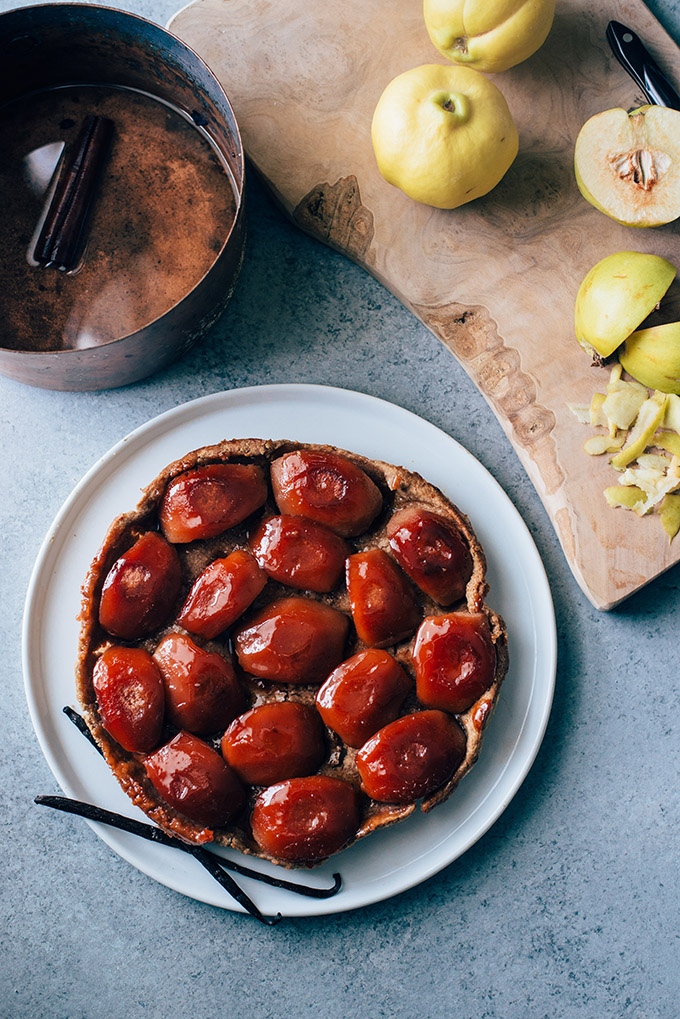
When your favorite seasonal fruit finally hits the stores, it’s kind of a big deal, right? For me, this is the quince. I’m not saying it’s my favorite fruit of all time; I refuse to pick favorites. (Shhh, it’s pears.) But quinces are really high up there, probably because of their unicorn-like availability and, for me, poetic connotation.
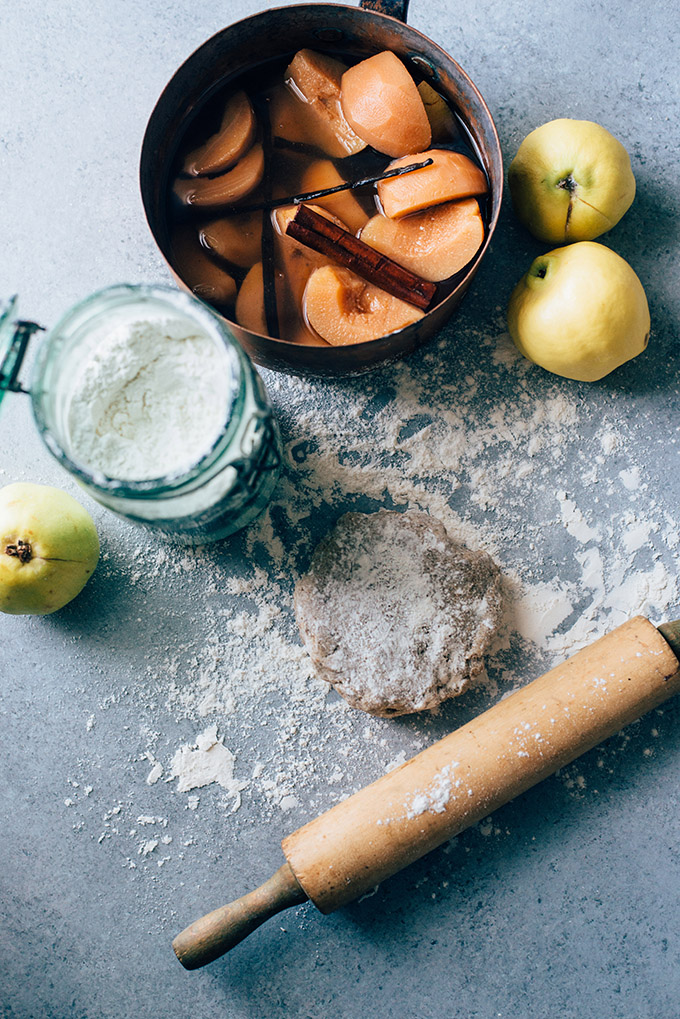
I only see quinces in my regular grocery store for a few weeks every winter, and never at farmers markets. My friend Lindsay, who does my gardening for me because I have a black thumb to rival all black thumbs, has assured me that I can put a quince tree in my yard. But until it is planted and bearing fruit, I have to resort to stalking the produce aisles and shelling out a-buck-fifty for every quince.
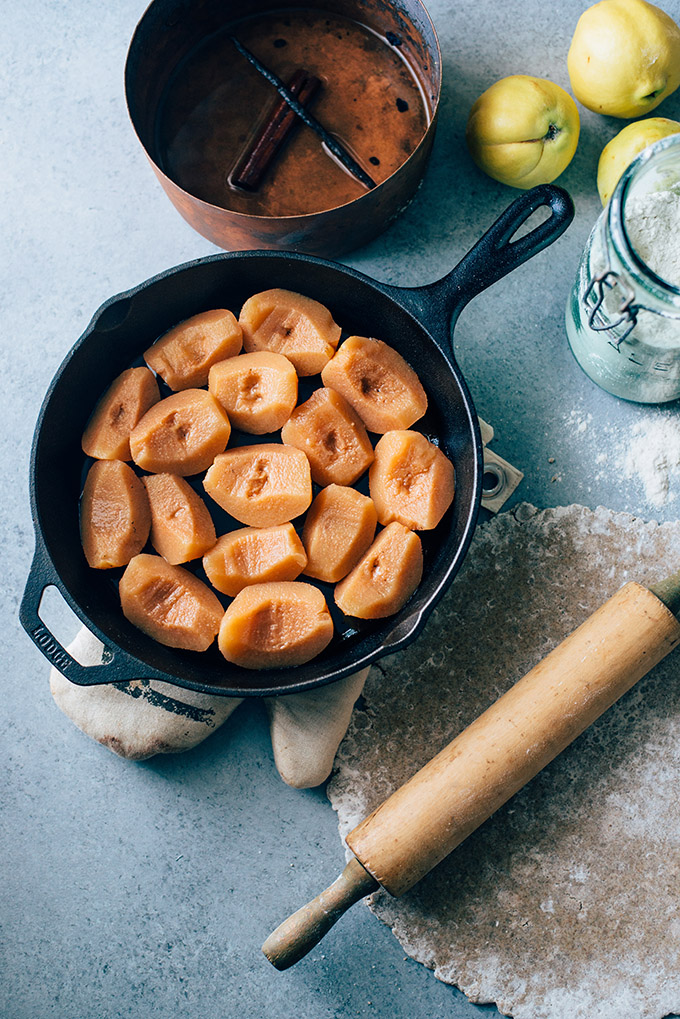
As luck would have it, I made a trip to the international grocery store by my sister’s house to pick up some bean sprouts, and their selection of quinces was absolutely gorgeous. Normally when I find them, the quinces are battered and bruised. Not so with these quinces. They were gently nestled into little foam coats, with smooth yellow skin. They barely even had woody spots on the inside, which is a rarity. And they smelled incredible. I grabbed about ten of them.
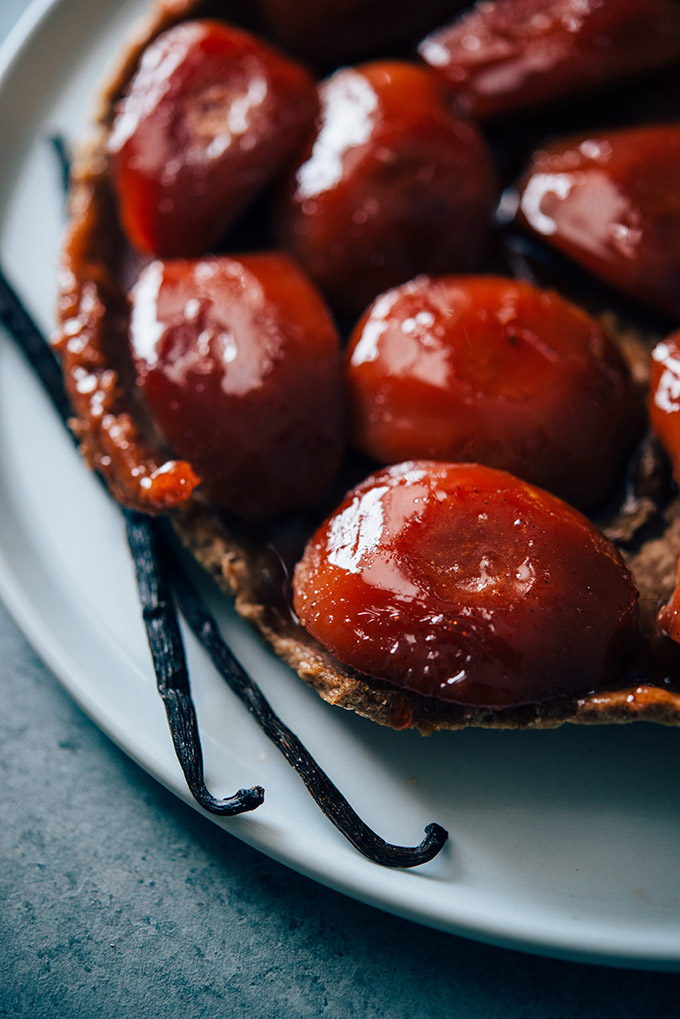
Even though a tarte tatin isn’t the most delicate of desserts, I knew that it would really showcase the translucent burgundy color of the cooked quinces. The first tart I made with an all-purpose flour crust, which was totally fine. I couldn’t taste the first one due to the fact that my bronchitis led to a sinus infection that destroyed my senses for two weeks. So I brought it to a dinner with my friends, naturally. They lodged no complaints, but I don’t trust friends when it comes to taste testing, so I insisted that Phillip tell me everything that was wrong with it. He couldn’t come up with anything. But since I don’t trust him, I decided to make my next test batch with some rye flour in the crust. I am incorrigible.

So some words to the wise: Use enough quinces to pack reeeally tightly into your pan. Get them to hug each other. With my second testing of this recipe, I used four quinces, but they were a bit smaller than the original batch. When they shrunk during baking, there were gaps, and I realized I could have squeezed another quince or two in there.
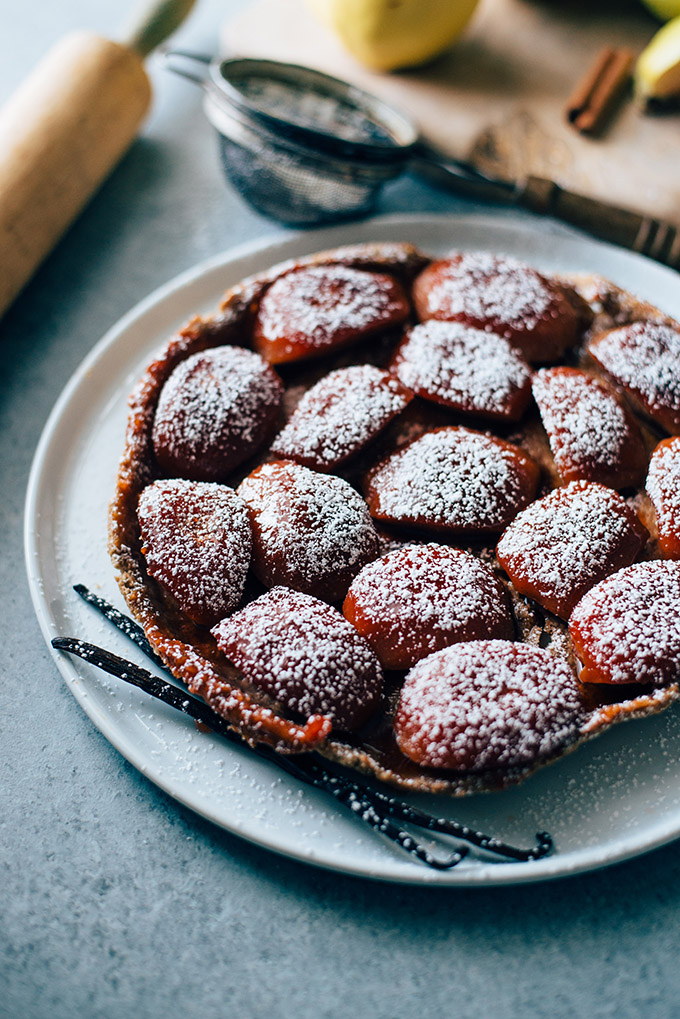
My other tip is to make sure your coconut oil isn’t too cold when you’re rolling out the dough. If it’s too cold, those coconut oil pieces will rip through the dough like tiny little knives and leave cracks. Kind of the opposite of everything you’ve heard about butter in pie doughs. If you find that your dough is cracking when you roll it, let it rest at room temperature for 10-15 minutes and then try rolling it again.
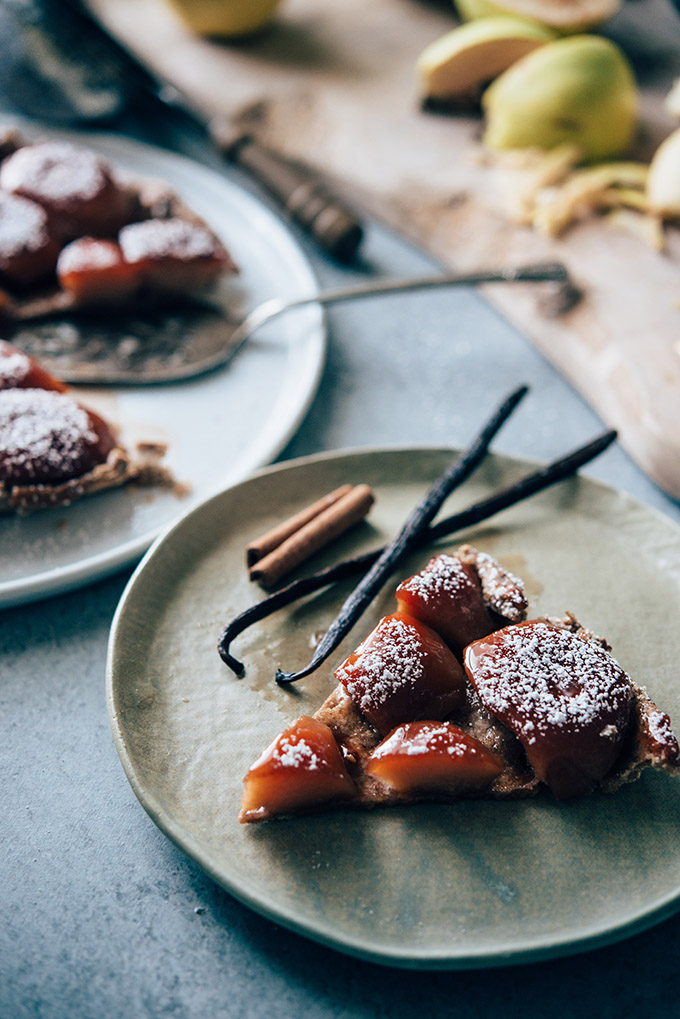
VEGAN QUINCE TARTE TATIN WITH RYE COCONUT OIL CRUST
- 3½ cups water
- ½ cup (50 grams) granulated sugar
- ¼ cup (75 grams) maple syrup
- ¼ whole lemon
- ½ vanilla bean, split lengthwise
- 1 cinnamon stick
- 4-6 medium quinces
- 1 cup rye flour (120 grams)
- ½ cup all-purpose flour (60 grams)
- 1 tablespoon cane sugar
- heavy pinch of kosher salt
- ¼ cup (60 grams) refined coconut oil, melted and cooled slightly
- 5-6 tablespoons ice water
- In a medium saucepan, combine water, sugar, maple syrup, lemon, vanilla bean, and cinnamon stick. Use the lid of the saucepan as a guide to cut a circle out of parchment that is the same diameter as the pan’s interior. Cut a 1-inch circle in the center of the parchment by folding the circle into quarters and then cutting the tip of the wedge off. Set the parchment circle aside. Place the pan over medium-high heat while you prepare the quinces.
- Peel the quinces with a vegetable peeler, then slice each quince into quarters. Use a sharp paring knife and carefully slice out the core of quinces by guiding the knife in a crescent shape through the fruit (watch your fingers!). Make sure you remove any seeds and rough parts.
- Place the peeled, cored quinces into the poaching liquid, which should be simmering by now. Cover the pan with the parchment circle, pressing it against the poaching liquid to get it to stick. The edges might curl up a bit at first; just press them down against the liquid to get them to stick. Turn the heat down to the lowest heat or maybe slightly hotter; you just want the liquid to simmer ever so slightly. Allow the poaches to cook for 1-2 hours, until a fork can pierce through a quince easily, then remove the pan from the heat. At this point, you can move forward with the recipe or cover the saucepan and chill the quinces in their poaching liquid until you’re ready to use them, up to 4 days.
- Set your oven rack to the lower third of the oven. Preheat the oven to 375°F.
- Whisk together both flours, sugar, and salt in a medium mixing bowl. Drizzle in the melted coconut oil a tablespoon at a time, mixing by moving your fingers and thumb in a twisting motion to distribute the oil until it resembles a coarse meal. Pop the bowl into the freezer for 10-15 minutes to harden up the coconut oil a bit.
- Remove the bowl from the freezer and break up any extra large coconut oil chunks. Sprinkle in the ice water, a tablespoon at a time, and blend using the twisting motion you used for the oil. The dough is ready when it holds together when you pinch it. If it doesn’t, add a bit more water. When the dough is holding, form the dough into a ball, wrap it tightly in plastic wrap, and let it rest at room temperature for 20-30 minutes.
- Meanwhile, add 1 cup of the quince poaching liquid to a 9- or 10-inch cast iron skillet or tarte tatin pan. Cook on the stove over medium-high heat to reduce the liquid to about ¼ cup, so a quarter- to half-inch of syrup coats the bottom of the pan. Arrange the poached quinces over the syrup in concentric circles with the cut sides facing up, packing them as tightly together as you can.
- Roll the tart dough into a 10-inch circle, then lay the dough over the quinces. Trim off any excess dough with a paring knife, then tuck the edges of the dough around the outermost quinces. Place the pan on the lower oven rack and bake for 45 minutes. Remove from the oven and let rest for 2-3 minutes, then carefully (very carefully! with oven mitts!) invert the pan onto a rimmed plate. Don’t let the tart sit in the pan too long or it will stick. Rearrange any fruit that may have fallen out of its spot, and scrape any remaining syrup from the bottom of the pan over the top of the tart.
- Serve the tart when it is warm or at room temperature. You can sprinkle the top with a little powdered sugar for extra prettiness if you want, but the added sugar definitely isn’t necessary.



























